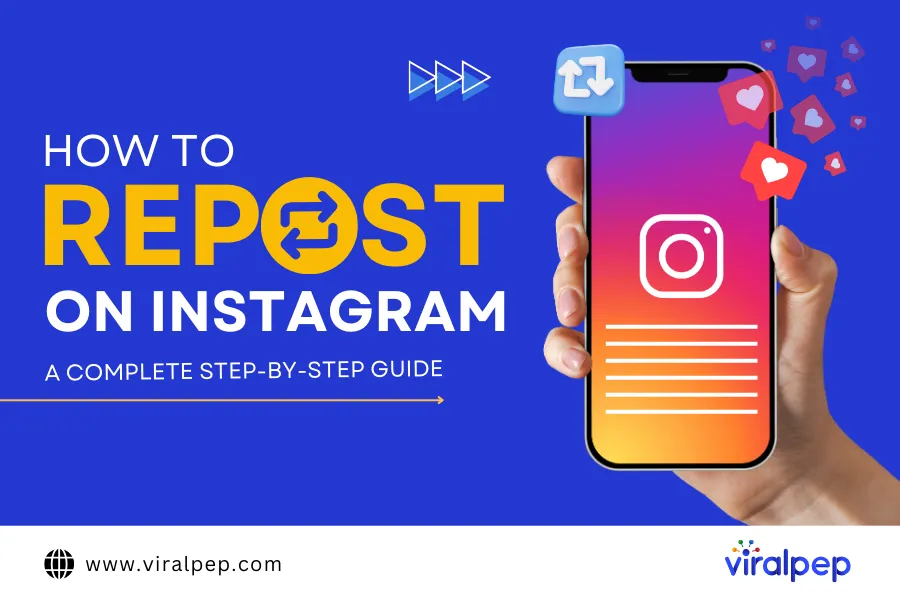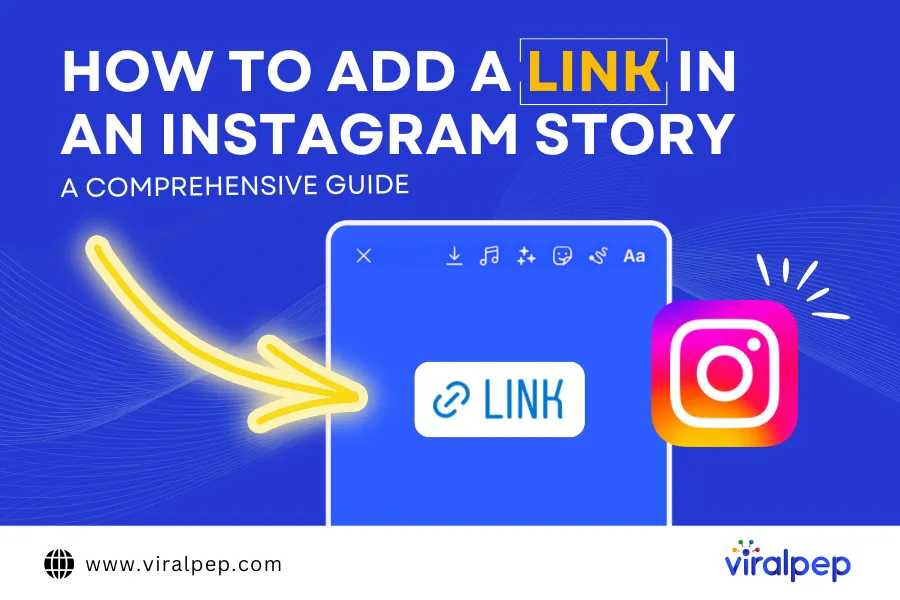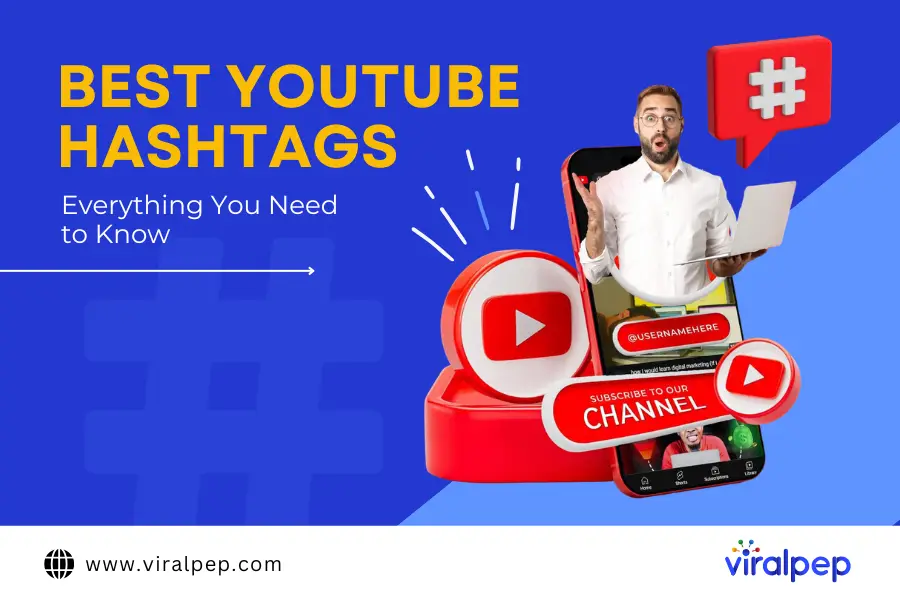Affiliate marketing is one of the most effective ways to earn money online by promoting other people’s products or services. Once you set up your affiliate marketing campaigns, it has the potential to generate passive income consistently. While the initial effort of creating visibility for your affiliate offers can be challenging, the long-term rewards make it a worthwhile endeavor.
For beginners, understanding how to make money with affiliate marketing often feels overwhelming. With so many resources available online and claims like “make money while you sleep with affiliate marketing,” it’s easy to get confused. However, understanding the fundamentals and adopting the right strategy can simplify the process and set you up for success.
Affiliate marketing is not a get-rich-quick scheme, but it is a legitimate way to earn money online if done correctly. To understand its potential, it’s essential to first grasp what is affiliate marketing and how it works. Many successful affiliates report steady income growth yearly by following proven strategies. For instance, approximately 30% of the revenue from many blogs is generated through affiliate marketing, showing its effectiveness as a reliable income source. If you’re also curious about platforms like TikTok, you might wonder, how much money per view on TikTok can contribute to an overall income strategy, especially when combined with affiliate promotions. Exploring this can give you a broader understanding of how social media can work hand-in-hand with affiliate marketing.
In this post, we’ll walk you through how to make money with affiliate marketing by outlining the exact steps to get started and the strategies you need to make it work. Whether your goal is to earn $100 per day or scale that to $1,000 per day, this guide will provide actionable insights to help you achieve those milestones.
The best part? Affiliate marketing doesn’t require you to create your own products or services. All you need is a website, the right approach, and the willingness to learn. With the affiliate marketing industry projected to grow from $8.2 billion in 2022 to an estimated $10.72 billion by 2024 (according to Influencer Marketing Hub), now is the perfect time to get started.
By learning how can you make money with affiliate marketing and taking the first steps today, you’ll position yourself to take advantage of this growing opportunity and build a sustainable source of online income. Let’s dive into the world of affiliate marketing and discover how you can turn it into a successful venture.
What Is Affiliate Marketing?
Affiliate marketing is a performance-driven marketing approach where businesses compensate individuals or organizations (affiliates) for promoting their products or services and driving new customers. It operates on a commission-based model, making it a mutually beneficial system for both the business and the affiliate.
If you’re wondering, how do you earn money from affiliate marketing, the process involves three primary participants:
- The Merchant – The company or business offering a product or service.
- The Affiliate – You, the individual or organization promoting the merchant’s offerings.
- The Customer – The end user who purchases the product or service through the affiliate’s efforts.
Affiliates earn commissions by successfully driving actions, such as sales or leads, for the merchant. For example, if you recommend a product like an online course on your blog, and a visitor clicks on your affiliate link to purchase it, you receive a percentage of the sale as a reward.
This model is popular for its simplicity and effectiveness. For businesses, it’s a cost-efficient way to expand their customer base without upfront advertising costs. For affiliates, it’s a lucrative opportunity to monetize their content, whether through blogs, social media, or other platforms.
Affiliate marketing thrives because it creates a win-win scenario: businesses gain increased visibility and sales, while affiliates are rewarded for their promotional efforts. This synergy is what makes affiliate marketing a key player in today’s digital economy.
How Does Affiliate Marketing Work?
Affiliate marketing operates on a simple and effective model. Affiliates promote a company’s product or service and earn commissions based on completed actions, such as sales, leads, or visits.
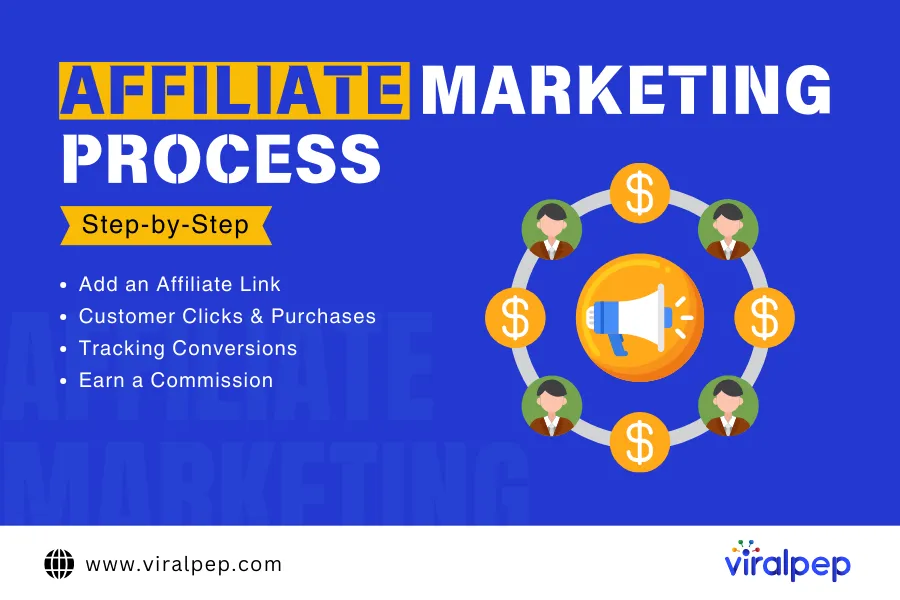
Here’s how it works step by step:
- Sign Up for an Affiliate ProgramAffiliates join a company’s affiliate program and receive unique tracking links. These links monitor the traffic, sales, or actions generated through the affiliate’s marketing efforts.
- Promote the Products or ServicesAffiliates use various platforms—such as blogs, websites, newsletters, or social media—to promote the company’s offerings. The goal is to drive traffic through the affiliate link to encourage conversions.
- Earn CommissionsEvery time a user completes a desired action (such as purchasing a product or signing up for a service) through the affiliate’s link, the affiliate earns a commission.
For example, joining the Amazon Affiliate Marketing Program allows you to earn $200 per sale and $10 for every free trial sign-up made through your referral link.
Benefits of Affiliate Marketing
Affiliate marketing offers numerous advantages that make it an appealing venture for beginners and experienced marketers a like:

-
Low Barrier to Entry
- You don’t need to create or own a product.
- Simply promote existing products and earn a commission for each successful referral.
- It’s as easy as selecting a product, sharing a referral link, and earning income when sales occur.
-
Low Cost and Risk
- There’s no need for product development, inventory management, or substantial upfront investment.
- Your primary investment is time and effort. If a product isn’t resonating with your audience, you can quickly switch to promoting another without incurring significant losses.
-
Easily Scalable
- Affiliate marketing allows you to reach a global audience.
- By diversifying your portfolio and promoting multiple products, you can attract a broader audience.
- Optimizing your content and strategies helps scale your income as your reach expands.
-
Passive Income
- Once your promotional content is created, it can continue to generate income over time.
- While it’s not a quick-money scheme, consistent effort can lead to a steady passive income stream.
-
Work From Anywhere
- Flexible working hours and location.
- All you need is internet access and your platform.
Types of Affiliate Marketing
There are three primary models of affiliate marketing: unattached, related, and involved.
-
Unattached Affiliate Marketing
- This is a low-commitment model where the affiliate has no personal connection to the product or niche.
- Affiliates often use paid ads (e.g., PPC campaigns) to direct traffic to their links without endorsing the product.
- Example: Running ads for a fitness gadget without ever using it yourself.
-
Related Affiliate Marketing
- Affiliates have knowledge or authority in the product’s niche but don’t use the product themselves.
- This model benefits from audience trust since the affiliate is seen as an expert in the field.
- Example: A fitness blogger promoting nutritional supplements relevant to their audience.
-
Involved Affiliate Marketing
- Affiliates personally use and endorse the product or service.
- This approach builds the highest level of trust and often results in better conversion rates.
- Example: A tech reviewer testing a gadget and sharing a detailed review to influence purchasing decisions.
For long-term success, focusing on related and involved affiliate marketing can lead to stronger audience trust and higher earnings potential.
How to Make Money with Affiliate Marketing
Affiliate marketing is one of the simplest and most profitable ways to generate passive income online. By promoting products or services and earning a commission for every sale made through your unique links, you can turn your online presence into a revenue stream. Here’s a step-by-step guide to help you get started with affiliate marketing and make it work for you.
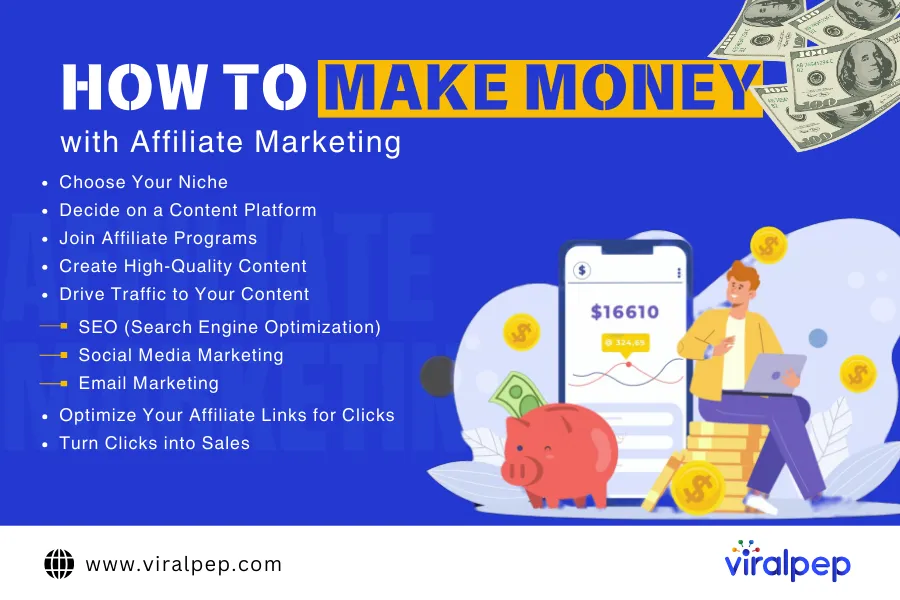
-
Choose Your Niche
Your niche is the specific area or topic you’ll focus on when creating social media content and promoting products. Choosing the right niche is critical for standing out in today’s competitive landscape.
-
How to Find Your Niche
- Passion: What topics excite you the most? Writing about what you love keeps you motivated.
- Expertise: What are you knowledgeable about or willing to learn?
- Audience Demand: What are people searching for? Use tools like Google Trends to identify trending topics.
- Profitability: Does this niche have products with affiliate programs?
For example, instead of a broad category like “fitness,” narrow it down to “home workout routines for beginners.” A focused niche helps you build a loyal audience and improves your chances of ranking in search engines.
-
-
Decide on a Content Platform
Affiliate marketing works on various platforms, including:
- Websites or Blogs (recommended for long-term growth and SEO)
- YouTube Channels (great for tutorials and reviews)
- Social Media Platforms (Instagram, TikTok, etc.)
- Email Newsletters (perfect for building a community and sharing updates)
We recommend starting with a website and using SEO to drive organic traffic. A well-optimized blog can provide consistent, passive traffic over time.
-
Join Affiliate Programs
Affiliate advertising programs come in various forms. Here’s a breakdown:
- High-paying, low-volume programs – Products like software or services with high commissions but fewer buyers.
- Low-paying, high-volume programs – Products with broad appeal, like Amazon Affiliates, which pay smaller commissions but offer high sales potential.
- High-paying, high-volume programs – Popular, expensive products like credit cards, though these often attract experienced marketers.
To find the best affiliate marketing programs, search for brands in your niche or analyze competitors. Tools like Ahrefs can help identify what programs they’re using. If you can’t find a program for a product you love, reach out to the company directly.
-
Create High-Quality Content
Content is the backbone of affiliate marketing. To succeed, your content must solve problems and add value. Here are a few examples of content types that work well:
- Product Reviews: Test products and share your honest experience.
- How-To Guides: Provide actionable advice that integrates affiliate links naturally.
- Comparisons: Help your audience choose between similar products.
For instance, if you’re reviewing “the best social media management tools for businesses,” ensure you’ve tested the tools and provide detailed insights into their pros and cons. Authenticity builds trust, leading to more clicks and conversions.
-
Drive Traffic to Your Content
Creating great content is only half the battle—you also need to bring visitors to your platform. Here are three proven strategies:
-
A. SEO (Search Engine Optimization)
SEO involves optimizing your website to rank higher on search engines. Focus on:
- Keyword Research: Use tools like SEMrush or Ahrefs to target popular search terms.
- On-Page Optimization: Write meta titles, descriptions, and headings with relevant keywords.
- Link Building: Gain backlinks from reputable websites to boost your domain authority.
-
B. Social Media Marketing
Promote your content on platforms like Instagram, Facebook, and TikTok to attract targeted traffic.
-
C. Email Marketing
Build an email list by offering something valuable, like a free guide, and use it to drive repeat visits to your content.
-
-
Optimize Your Affiliate Links for Clicks
Even the best content won’t succeed if readers don’t click on your affiliate links. Here are some tips:
- Strategic Placement: Ensure links are visible but not intrusive.
- Contextual Use: Mention the benefits of the product naturally within your content.
- Callouts: Use buttons or comparison tables to make links stand out.
-
Turn Clicks into Sales
Once you get clicks, the final step is to ensure those clicks convert into purchases. Although the merchant controls the final sale, here’s how you can increase the likelihood of conversions:
- Promote Reputable Products: Only recommend high-quality items you believe in.
- Track Performance: Use tools like Google Analytics to monitor click-through and conversion rates.
- Learn from Others: Study income reports from successful affiliate marketers to identify high-performing programs.
Affiliate marketing is a fantastic way to earn passive income, but it requires effort, strategy, and patience. By choosing the right niche, creating valuable social media content, and optimizing your marketing efforts, you can build a sustainable affiliate business and achieve your financial goals.
Start your affiliate marketing journey today and turn your passion into profit!
Best Affiliate Marketing Tools
Affiliate marketing tools help businesses and marketers manage their affiliate programs effectively, track performance, and boost conversions and engagement. Here are some top categories of tools and notable options for affiliate marketing:
-
Affiliate Program Management Tools
- Post Affiliate Pro: Manage affiliates, track referrals, and monitor commissions in one platform.
- Tapfiliate: A cloud-based affiliate management tool offering integration with popular e-commerce platforms.
- PartnerStack: Focuses on managing affiliate, reseller, and referral programs.
-
Affiliate Networks
- ShareASale: Connects affiliates with merchants and offers tools for tracking and reporting.
- CJ Affiliate (formerly Commission Junction): One of the largest networks for finding and managing affiliate partnerships.
- Rakuten Advertising: Combines affiliate marketing with advanced analytics and reporting.
-
Link Tracking& Analytics Tools
- Voluum: Advanced tracking and analytics for affiliate campaigns, including split testing.
- ClickMeter: Tracks clicks, conversions, and affiliate links with ease.
- Pretty Links: A WordPress plugin to create, track, and manage affiliate links.
-
SEO& Content Marketing Tools
-
Email Marketing Tools
- GetResponse: Combines email marketing with sales funnels to drive affiliate commissions.
- AWeber: Focused on helping affiliates build email lists and send targeted campaigns.
- ConvertKit: Ideal for bloggers and creators promoting affiliate products.
-
Social Media Tools
- Viralpep: Schedule and manage social media posts promoting affiliate products.
-
Affiliate Marketplace Tools
- ClickBank: A platform for finding digital products to promote as an affiliate.
- JVZoo: Specializes in software and digital products for affiliate marketers.
- Impact: Connects affiliates and merchants with robust tracking and reporting.
-
Landing Page& Conversion Optimization Tools
- Unbounce: Create optimized landing pages for affiliate offers.
- ClickFunnels: Build sales funnels specifically designed for affiliate marketing.
- Instapage: Easy-to-use landing page builder with A/B testing capabilities.
-
Payment Processing Tools
- Payoneer: Widely used by affiliates for receiving international payments.
- Wise (formerly TransferWise): Offers affordable international money transfers for affiliate commissions.
- Stripe: Secure payment processing for affiliate program payouts.
-
Compliance& Fraud Prevention
- Everflow: Advanced fraud detection and affiliate program management.
- TUNE: Tracks fraud and ensures compliance within affiliate campaigns.
- Fraudlogix: Focuses on preventing fraudulent activity in affiliate marketing.
Choosing the Right Tools
The best tools for you depend on the size of your affiliate program, the channels you use, and your specific needs (e.g., tracking, payments, or content creation). Would you like me to recommend tools tailored to your specific business goals?
Conclusion
Earning through affiliate marketing begins with understanding your audience’s needs and identifying high-paying products that align with their interests. By creating engaging, high-quality content, you can attract the right audience to your site and guide them toward your affiliate offers.
Stick to the steps outlined in this guide and explore our additional resources to further master the art of making money with affiliate marketing.






